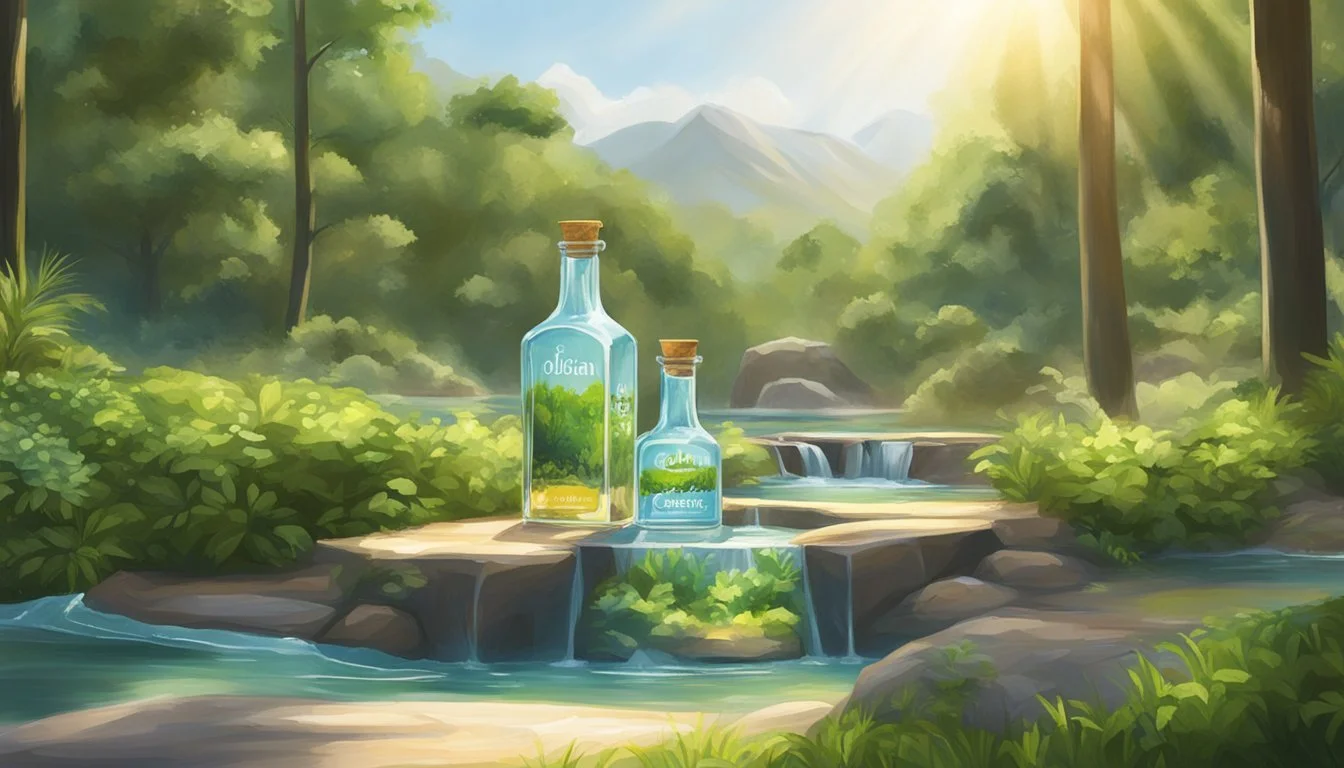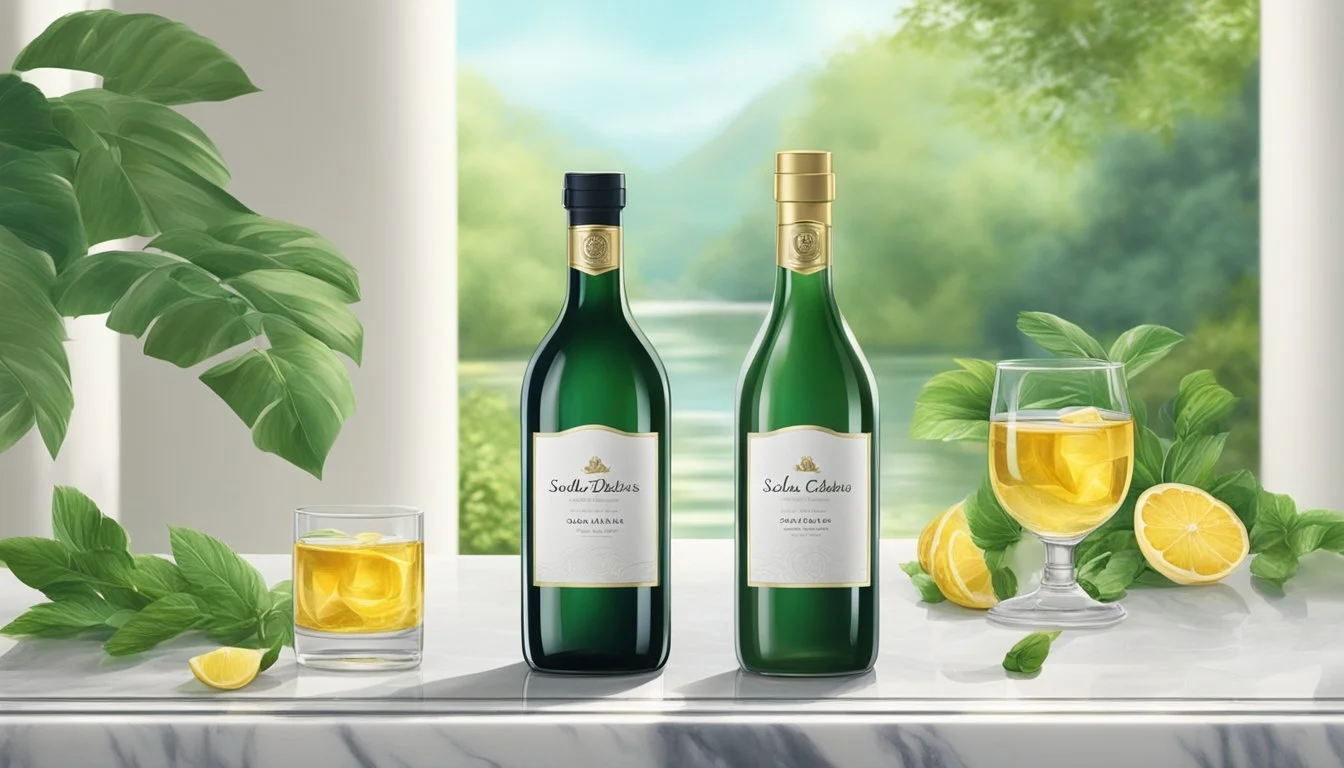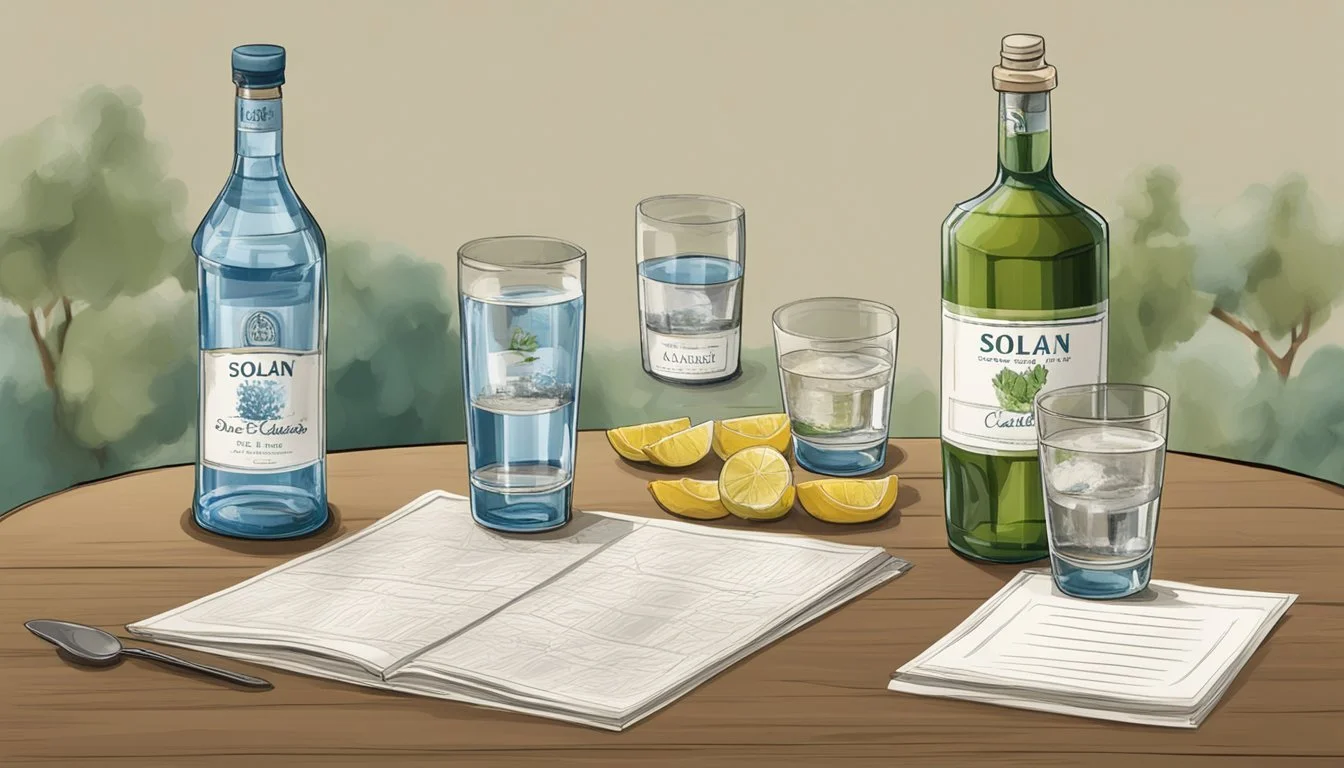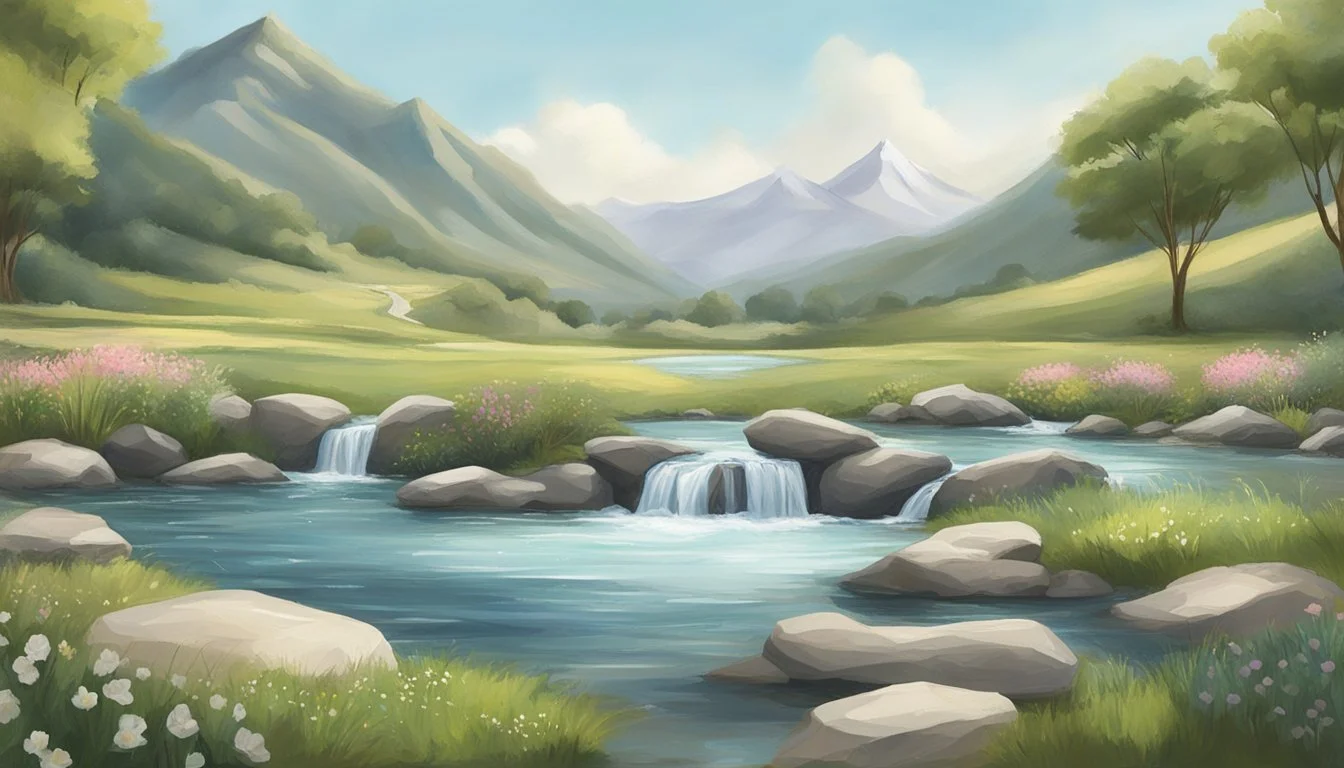Solán de Cabras vs. The Well
The Ultimate Bottled Water Comparison
When it comes to premium bottled water, Solán de Cabras and The Well stand out as top contenders. With roots tracing back over 3,600 years, Solán de Cabras offers a unique mineral composition sourced from the pristine springs of Serranía de Cuenca in Spain. Its smooth taste and historical reputation for purity make it a favorite among connoisseurs of fine water.
The Well is another premium brand that prides itself on delivering high-quality, refreshing bottled water. Though it may not boast the same ancient heritage, it has garnered a loyal following thanks to its meticulous sourcing and clean, crisp flavor. Both brands emphasize purity and mineral content, but they each bring something different to the table.
Choosing between Solán de Cabras and The Well ultimately depends on personal preference. Solán de Cabras offers a taste steeped in historical significance and mineral richness, while The Well provides a modern, refreshing alternative. This comparison will dive deeper into what makes each of these bottled waters special, helping you decide which one is better suited to your palate and hydration needs.
Understanding Bottled Water
Bottled water varies widely in terms of source, mineral content, and filtration processes. These factors influence not only the taste but also the health benefits and overall quality of the water.
Types of Bottled Water
There are different types of bottled water available in the market. Natural Mineral Water comes from protected underground sources and is bottled at the source. It contains naturally occurring minerals and must remain unaltered except for filtration.
Spring Water is sourced from an underground formation and flows naturally to the surface. It retains the same properties as it had at the source.
Purified Water is produced by distillation, deionization, reverse osmosis, or other suitable processes. It is more processed and might lack the natural mineral composition found in other types.
Mineral Content and Health Benefits
The mineral content in bottled water can vary significantly. Calcium and magnesium are crucial minerals for bone health and metabolic function. Sodium is often monitored for those on low-sodium diets.
Potassium and bicarbonate help in maintaining proper electrolyte balance and pH levels. The calcium-magnesium ratio can affect how the body absorbs these minerals.
Alkaline Water is known for its higher pH level, which can aid in neutralizing acidity in the body, though scientific opinions vary on these benefits.
The Role of Filtration and Purity
Filtration processes are vital in ensuring the purity of bottled water. Natural mineral water undergoes minimal filtration to retain its mineral content.
Other bottled water types like Purified Water use distillation or reverse osmosis to remove impurities. These methods can strip water of both contaminants and beneficial minerals.
Quality and purity are maintained through rigorous testing and certification to meet health standards. The goal is to deliver water that is free from harmful contaminants while maintaining beneficial aspects for health and hydration.
Maintaining filtration standards ensures that even when bottled, water remains pure and beneficial for consumption, catering to various health needs and preferences.
Comparing Brands and Origins
Solán de Cabras and The Well differ significantly in their histories and sources. While Solán de Cabras boasts a rich Spanish heritage, The Well represents a newer entrant in the premium bottled water market.
Solán de Cabras: A Spanish Heritage
Solán de Cabras originates from the Serranía de Cuenca mountains. This region in Spain is known for its naturally pure water resources. The water is filtered through layers of limestone, resulting in a mineral-rich composition with a slightly alkaline pH. It captures the essence of 3,600 years of geological history, making it a testament to natural purity and authenticity. The source, a natural spring, ensures a consistent taste and quality appreciated by many.
The Well: A New Contender
The Well sources its water from the pristine landscapes of New Zealand. Emerging from volcanic rock, this water is naturally filtered and enriched with minerals. Relatively new, The Well brands itself on the purity and natural filtration provided by the volcanic terrain. This unique origin story appeals to consumers looking for fresh, clean water. As a rising contender, it emphasizes the ecological benefits and the distinctive freshness of its natural spring source.
Taste Profile and Consumption Experience
The taste and consumption experience of bottled water brands like Solán de Cabras and The Well hinge on their unique characteristics, such as minerality and pH levels, which contribute to their overall flavor profiles.
Sensory Evaluation by Water Sommeliers
Water sommeliers focus on key characteristics when evaluating bottled water, including texture, minerality, and mouthfeel. Solán de Cabras is known for its smooth, silky mouthfeel and slight sweetness. This water often receives praise in fine dining circles for its refreshing nature and balanced taste.
The Well, in contrast, is appreciated for its crisp and minerally profile, which offers a clean and refreshing experience. Sommeliers note its mineral-rich content, highlighting subtle nuances that can pair well with various foods. The textural difference between the two brands provides distinct experiences tailored to different palates.
The Significance of pH and Minerality in Flavor
The pH level and mineral content significantly influence the flavor and feel of bottled water. Solán de Cabras is slightly alkaline, typically around a pH of 7.4, contributing to its smooth taste and balanced minerality. This composition makes it refreshing and easy to drink, making it a favorite among those who prefer a neutral yet distinctive taste profile.
The Well offers water with a slightly higher alkaline pH, often above 8.0, which gives it a crisp and clean taste. This higher alkalinity can impart a smooth taste while enhancing the water's refreshing qualities. The balanced minerality in both waters shapes their unique experiences, from the silky mouthfeel of Solán de Cabras to the mineral-forward, crisp flavor of The Well.
The Significance of Packaging
Packaging plays a vital role in both the environmental impact and user experience of bottled water. It influences aspects such as carbon emissions, plastic waste, and the health implications of material choices.
Glass vs. Plastic: Environmental and Health Impacts
Glass Bottles are considered more environmentally friendly due to their recyclability and lower plastic waste contribution. They don't leach chemicals over time, offering a safer option for health-conscious consumers. Conversely, their production and transportation result in higher carbon emissions due to their weight.
Plastic Bottles (PET) are lightweight, reducing transportation emissions. However, they contribute significantly to plastic waste and can release harmful chemicals, especially when reused. The plastic waste generated by PET bottles is a pressing environmental issue.
Design and Usability Considerations
Glass Bottles have a premium feel and are often easier to recycle. They are less prone to retaining flavors or odors from previous contents, maintaining water purity. However, they are heavier and more prone to breakage, potentially lowering their convenience for everyday use.
Plastic Bottles (PET) are lightweight, durable, and easy to carry, making them suitable for on-the-go use. They often feature ergonomic designs for better grip. Nonetheless, they may affect taste over time and are less sustainable due to the challenges in recycling and waste management.
Health and Wellness Contributions
Solán de Cabras and The Well both offer distinct health benefits, contributing to proper hydration and promoting overall well-being. Key areas of interest include their impact on hydration and mineral balance and the role of alkaline water in diet.
Hydration and Mineral Balance
Both brands emphasize hydration, which is crucial for maintaining overall health. Solán de Cabras is known for its mineral-rich composition, featuring essential minerals like magnesium and calcium. This contributes to balanced hydration and supports bodily functions.
The Well also prioritizes hydration with a focus on purity and balanced mineral content. It offers a low-sodium option, ideal for those monitoring their sodium intake. Both waters help in maintaining a healthy mineral balance, crucial for muscle function and nervous system health.
Alkaline Water and Diet
Alkaline water is another area where these brands stand out. Solán de Cabras has a naturally high pH, making it a suitable addition to diets that focus on balanced pH levels. Its alkaline nature may help neutralize acidity in the body, promoting well-being.
The Well offers alkaline water options as well. This can be beneficial for those looking to integrate alkaline diets to potentially alleviate acidity-related issues. Both brands provide water that supports different dietary goals, contributing to a healthier lifestyle.
Both Solán de Cabras and The Well are committed to offering high-quality, health-beneficial options, each catering to specific dietary and wellness needs.
Environmental and Ethical Considerations
Solán de Cabras and The Well are both premium bottled water brands, but their approaches to environmental sustainability and ethical practices can vary significantly.
Sustainable Practices in Water Bottling
Solán de Cabras sources its water from natural springs in the Serranía de Cuenca. They emphasize sustainability by utilizing eco-friendly practices throughout their bottling process. Their use of blue glass bottles reduces plastic waste and is fully recyclable. Furthermore, they prioritize using renewable energy sources at their bottling facilities.
The Well, although newer to the market, also strives to be environmentally friendly. They use lightweight PET bottles to minimize energy consumption and reduce carbon footprint during transportation. Additionally, The Well focuses on sustainable water management, ensuring the long-term viability of their water sources.
The Impact of Bottling on Local Ecosystems
The impact of water bottling on local ecosystems is a significant concern for both brands. Solán de Cabras is committed to protecting the surrounding forests and natural habitats. They work actively with local conservation groups to maintain a balance between water extraction and ecological health.
The Well has similar commitments, focusing on reducing the impact on local water tables and maintaining biodiversity. They conduct regular environmental impact assessments to monitor and mitigate any adverse effects on local wildlife and ecosystems.
Both brands aim to offer consumers a product that not only quenches thirst but also does so in a manner that is responsible and least harmful to the environment. Their active engagement in sustainability practices and ethical considerations sets a standard in the bottled water industry.
Industry Insights and Trends
The bottled water industry has witnessed significant growth and transformation in recent years. Consumers are increasingly aligning their choices with health trends and environmental awareness, impacting market dynamics and brand strategies.
The Role of Big Brands in the Market
Big brands such as Coca-Cola and Nestlé heavily influence the bottled water market. Coca-Cola, with its popular smartwater, and Nestlé, through brands like San Pellegrino, dominate various segments. Their extensive distribution networks and marketing campaigns ensure widespread availability and brand recognition.
Brands like Fiji and Evian have established themselves as premium choices. These brands emphasize the purity and unique mineral compositions of their water sources, appealing to health-conscious consumers.
The presence of these industry giants also drives innovation. For instance, smartwater has expanded into the sparkling water and alkaline water markets, appealing to diverse consumer preferences.
Emerging Trends in Bottled Water Consumption
Consumer preferences are evolving towards sustainable and functional bottled water. There is a noticeable shift towards eco-friendly packaging, with brands like Icelandic Glacial using recycled materials. This aligns with growing environmental consciousness.
Sparkling water and flavored water are witnessing increased popularity, catering to those seeking variety and a healthier alternative to sugary drinks. The rise of functional waters, infused with vitamins, minerals, or electrolytes, addresses the demand for enhanced hydration.
Health trends such as the preference for alkaline water have led to the introduction of products that cater to these specific needs. Brands are adapting quickly, ensuring they meet the evolving demands of their consumers.
More About Solán de Cabras
Acqua Pana vs Solan de Cabras: Which Bottled Water is Better?
Antipodes vs Solan de Cabras: Which Bottled Water is Better?
Aqua Carpatica vs Solan de Cabras: Which Bottled Water is Better?
Arrowhead vs Solan de Cabras: Which Bottled Water is Better?
Boxed Water vs Solan de Cabras: Which Bottled Water is Better?
Castle Rock vs Solan de Cabras: Which Bottled Water is Better?
Core Hydration vs Solan de Cabras: Which Bottled Water is Better?
Deer Park vs Solan de Cabras: Which Bottled Water is Better?
Hawaiian Springs vs Solan de Cabras: Which Bottled Water is Better?
Ice Mountain vs Solan de Cabras: Which Bottled Water is Better?
Icelandic Glacial vs Solan de Cabras: Which Bottled Water is Better?
Just Water vs Solan de Cabras: Which Bottled Water is Better?
Mountain Valley Spring Water vs Solan de Cabras: Which Bottled Water is Better?
Nestle Pure Life vs Solan de Cabras: Which Bottled Water is Better?
Poland Spring vs Solan de Cabras: Which Bottled Water is Better?
San Pellegrino vs Solan de Cabras: Which Bottled Water is Better?
Smartwater vs Solan de Cabras: Which Bottled Water is Better?
Solan de Cabras vs 1907water: Which Bottled Water is Better?
Solan de Cabras vs Alkaline88: Which Bottled Water is Better?
Solan de Cabras vs Big Chill: Which Bottled Water is Better?
Solan de Cabras vs BodyArmor: Which Bottled Water is Better?
Solan de Cabras vs Cascade Mountain: Which Bottled Water is Better?
Solan de Cabras vs CBD Living: Which Bottled Water is Better?
Solan de Cabras vs Crystal Geyser: Which Bottled Water is Better?
Solan de Cabras vs Crystal Lake: Which Bottled Water is Better?
Solan de Cabras vs Essence pH10: Which Bottled Water is Better?
Solan de Cabras vs Hawaii Volcanic: Which Bottled Water is Better?
Solan de Cabras vs Kirkland Signature: Which Bottled Water is Better?
Solan de Cabras vs Liquid Death: Which Bottled Water is Better?
Solan de Cabras vs Open Water: Which Bottled Water is Better?
Solan de Cabras vs Proud Source: Which Bottled Water is Better?
Solan de Cabras vs Pure Life: Which Bottled Water is Better?
Solan de Cabras vs Purely Sedona: Which Bottled Water is Better?
Solan de Cabras vs Richard's Rainwater: Which Bottled Water is Better?
Solan de Cabras vs Simple Truth: Which Bottled Water is Better?
Solan de Cabras vs Talking Rain AQA: Which Bottled Water is Better?
Solan de Cabras vs Weird Water: Which Bottled Water is Better?
Solan de Cabras vs Whole Foods 365: Which Bottled Water is Better?
Solan de Cabras vs Whole Foods Italian Still Mineral water: Which Bottled Water is Better?
Topo Chico vs Solan de Cabras: Which Bottled Water is Better?
Zephyrhills vs Solan de Cabras: Which Bottled Water is Better?
More About The Well
Cascade Mountain vs The Well: Which Bottled Water is Better?
Hawaiian Springs vs The Well: Which Bottled Water is Better?
Icelandic Glacial vs The Well: Which Bottled Water is Better?
Mountain Valley Spring Water vs The Well: Which Bottled Water is Better?
Nestle Pure Life vs The Well: Which Bottled Water is Better?
Richard's Rainwater vs The Well: Which Bottled Water is Better?
The Well vs Kirkland Signature: Which Bottled Water is Better?
The Well vs Talking Rain AQA: Which Bottled Water is Better?
Whole Foods Italian Still Mineral water vs The Well: Which Bottled Water is Better?







